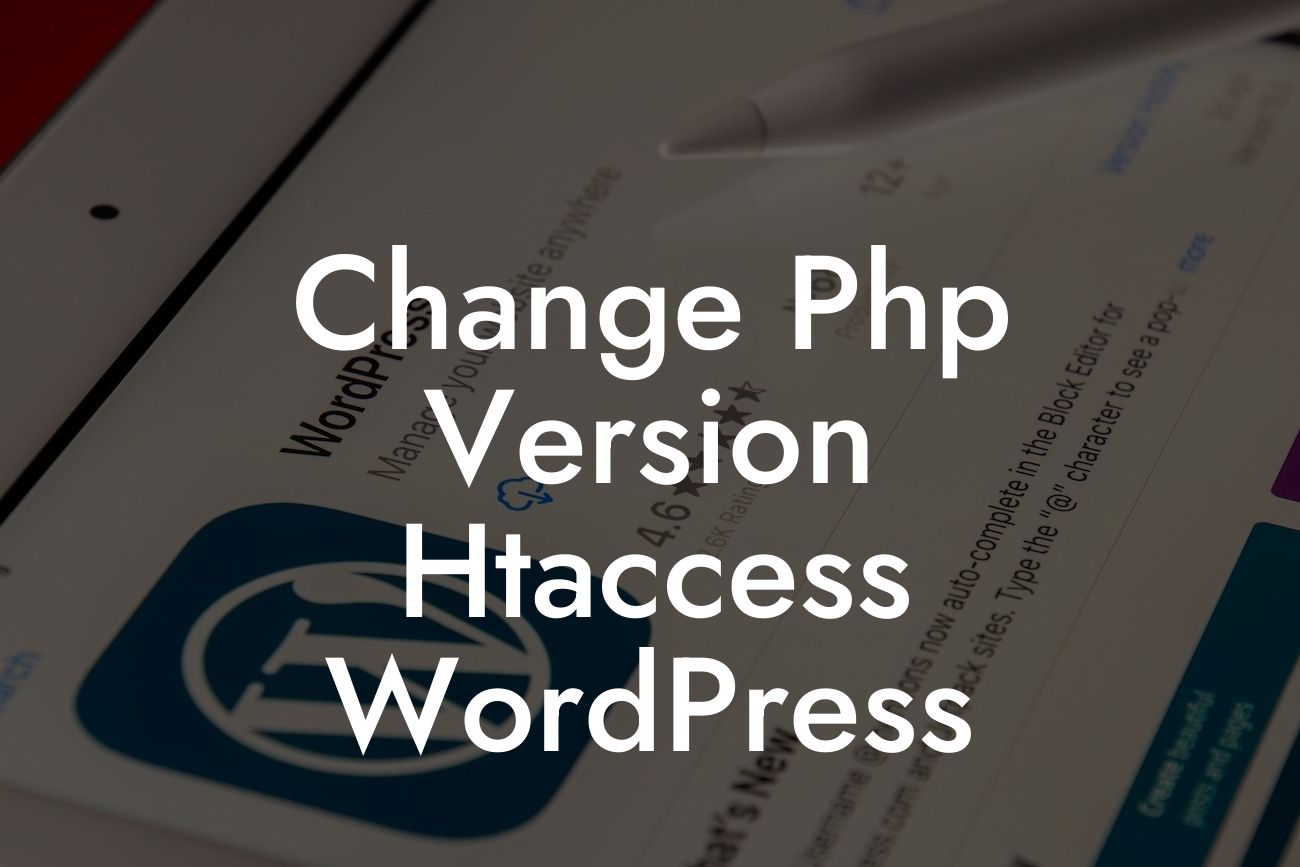In today's fast-paced online world, having a strong online presence is crucial for small businesses and entrepreneurs. One of the key aspects of achieving this is by having a well-optimized and efficiently functioning WordPress website. In this blog post, we will delve into an essential topic for WordPress users - changing the PHP version in the htaccess file. This simple yet critical step can have a significant impact on your website's performance and functionality. So, let's dive right into it and explore how you can make this change effectively.
Changing the PHP version in the htaccess file may sound complex, but it is relatively straightforward if you follow the right steps. Here's a step-by-step guide to help you through the process:
1. Understand the Importance of PHP Version:
Before we proceed any further, let's understand why changing the PHP version is necessary. PHP is the scripting language on which WordPress is built. Regular updates to PHP enhance security, performance, and compatibility with other plugins and themes. By using the latest PHP version, you ensure that your website stays up-to-date and benefits from these improvements.
2. Check the Current PHP Version:
Looking For a Custom QuickBook Integration?
To begin, you need to determine the current PHP version your WordPress website is running on. You can find this information by accessing the "Tools" or "System Information" section within your WordPress dashboard. Note down the current PHP version, as it will be required later.
3. Backup your htaccess File:
Before making any changes, it is essential to create a backup of your htaccess file. This precautionary step ensures that you can easily revert to the previous version if anything goes wrong. You can simply download a copy of your existing htaccess file via FTP or use a file manager provided by your hosting provider.
4. Access the htaccess File:
Next, you'll need to locate and access the htaccess file. In most cases, this file can be found in the root folder of your WordPress installation. You can use an FTP client or a file manager provided by your hosting provider to access and edit the file.
5. Add or Modify the Necessary Code:
To change the PHP version, you'll need to add or modify some code within the htaccess file. The exact code may vary depending on your hosting provider and the PHP version you want to switch to. Reach out to your hosting provider's support or check their documentation for the specific code required.
6. Save and Upload the Modified htaccess File:
Once you have made the necessary changes to the code, save the file and upload it back to its original location. Before saving, double-check the code for any errors or typos to ensure that it functions correctly.
Change Php Version Htaccess Wordpress Example:
Let's consider a realistic example to understand this process better. Imagine you currently have PHP version 5.6 running on your WordPress website, but you want to upgrade it to PHP version 7.4. By following the steps outlined above, you can seamlessly modify the htaccess file and make the necessary changes to achieve this upgrade.
Congratulations! You have successfully learned how to change the PHP version in the htaccess file in WordPress. By keeping your PHP version up-to-date, you ensure that your website remains secure, optimized, and compatible with the latest WordPress plugins and themes. If you found this guide helpful, we have several other informative articles on DamnWoo that can further enhance your understanding of WordPress and boost your online success. Don't forget to explore our range of awesome plugins designed exclusively for small businesses and entrepreneurs. Share this article with others who might find it valuable and let us know your thoughts in the comments below!













